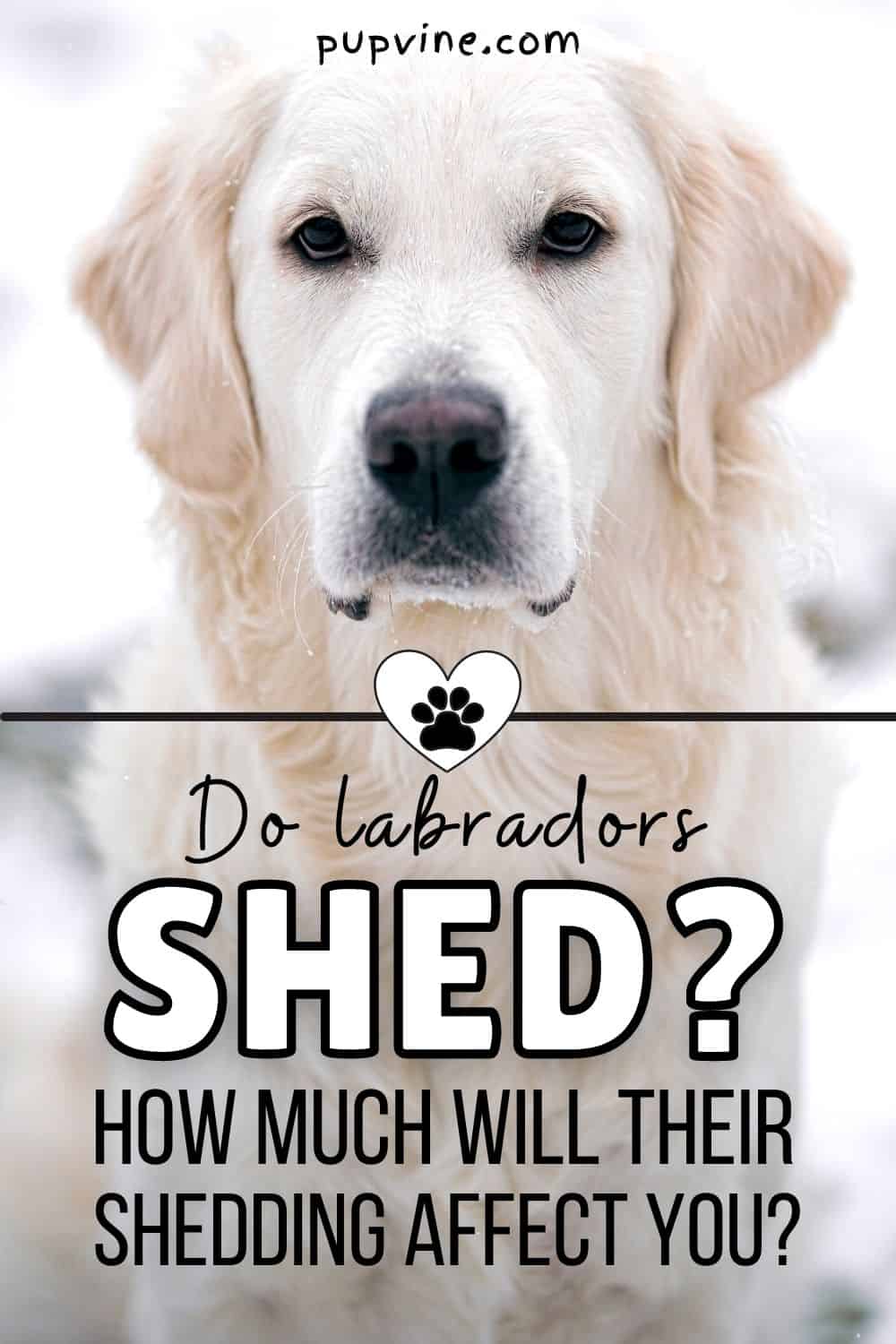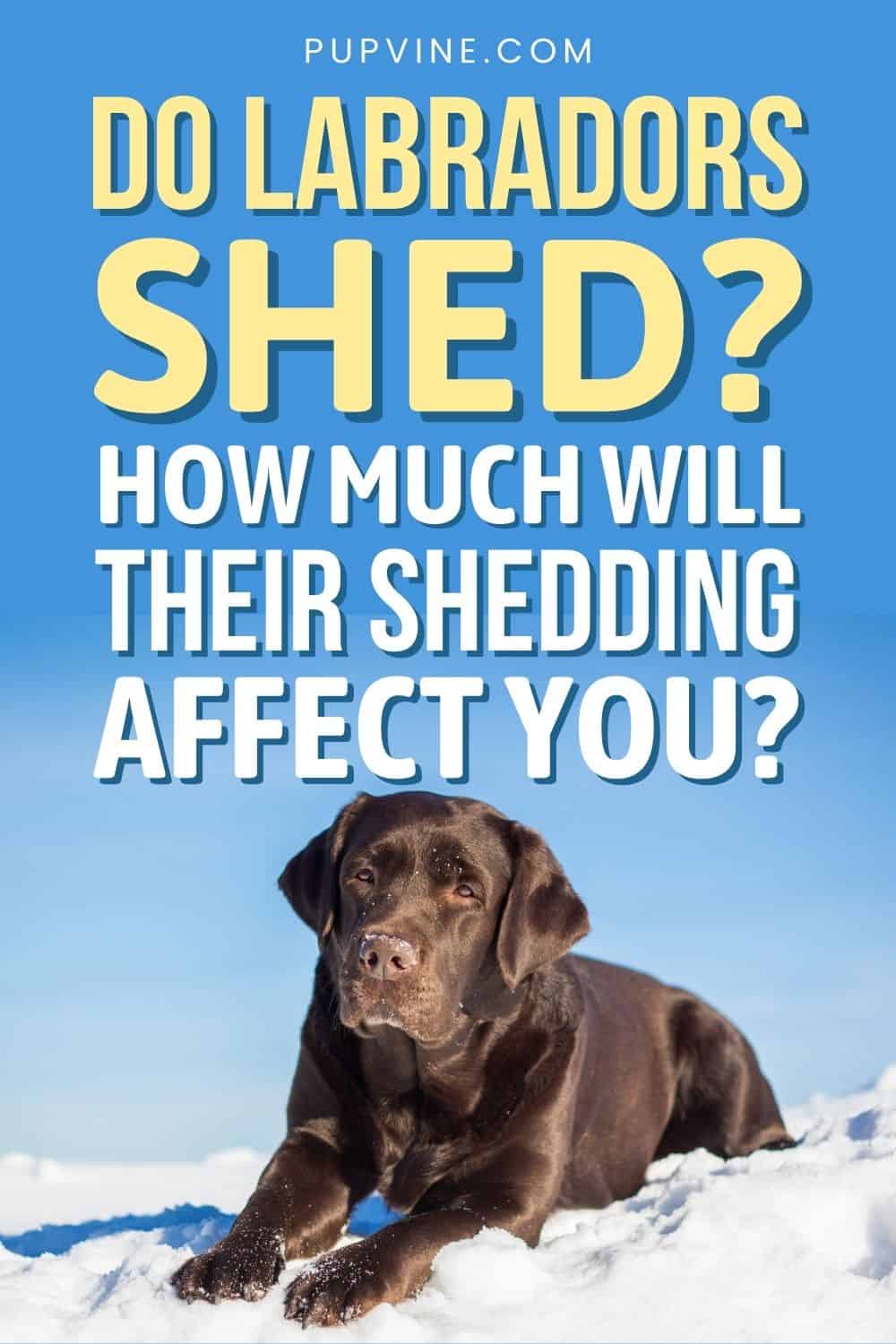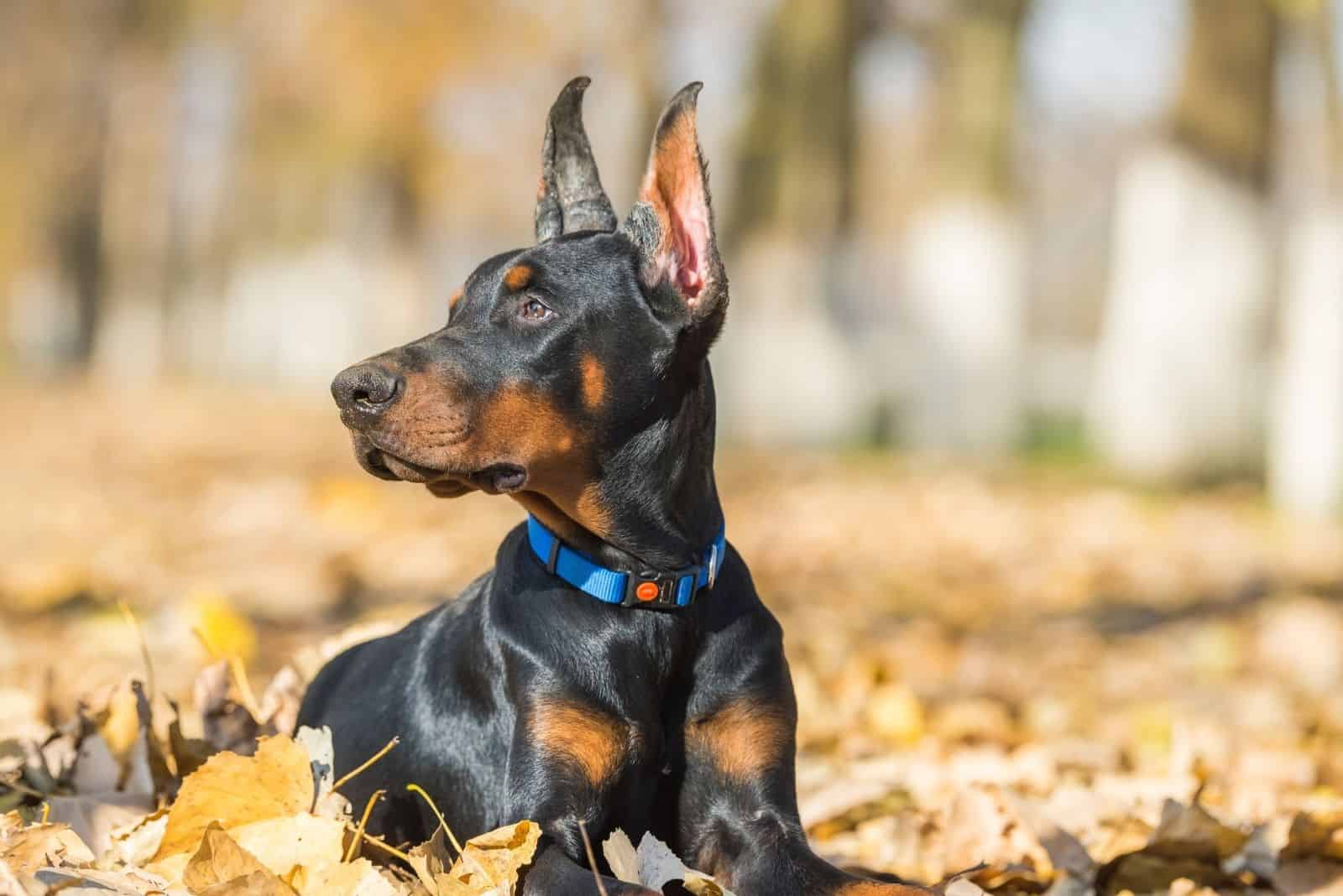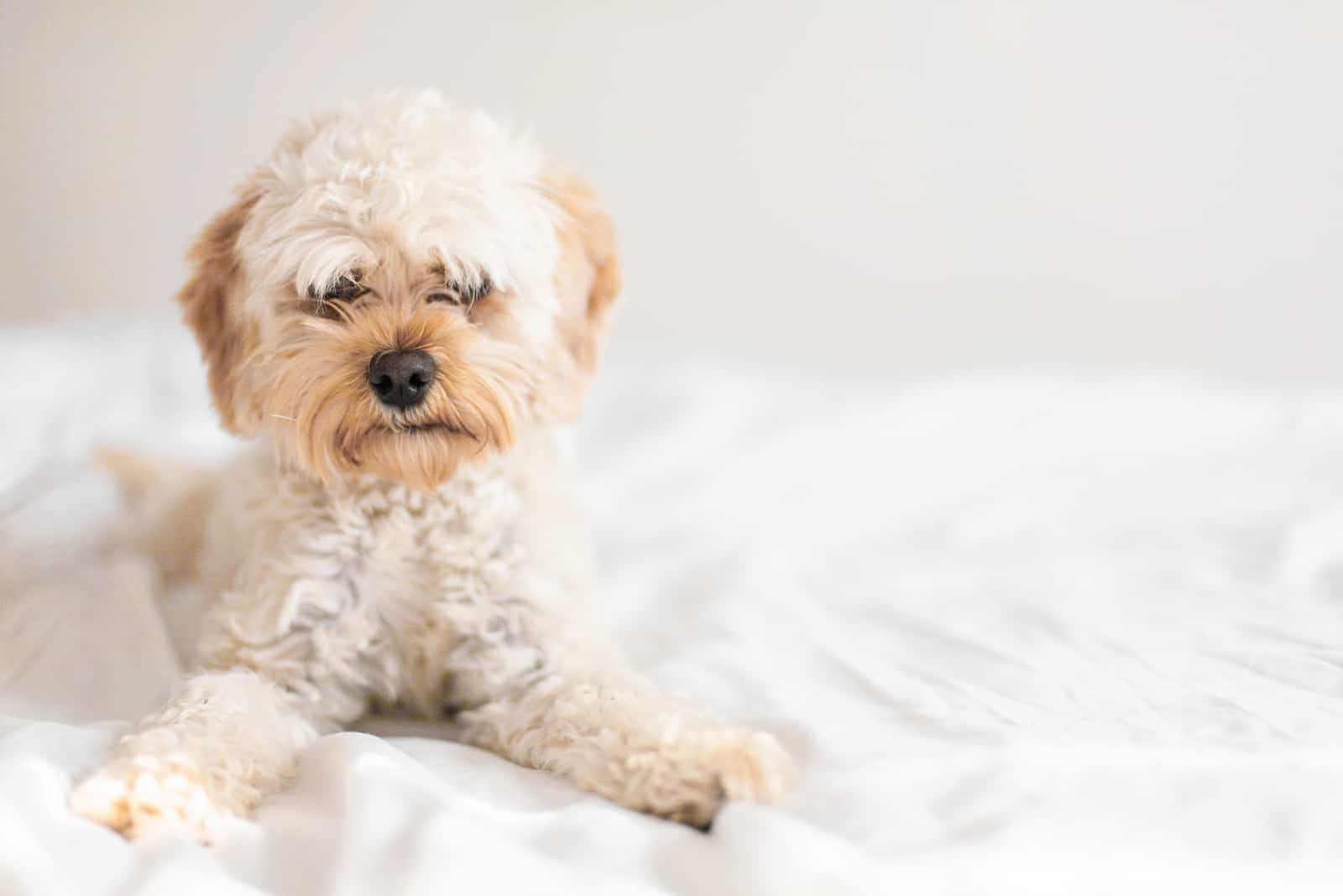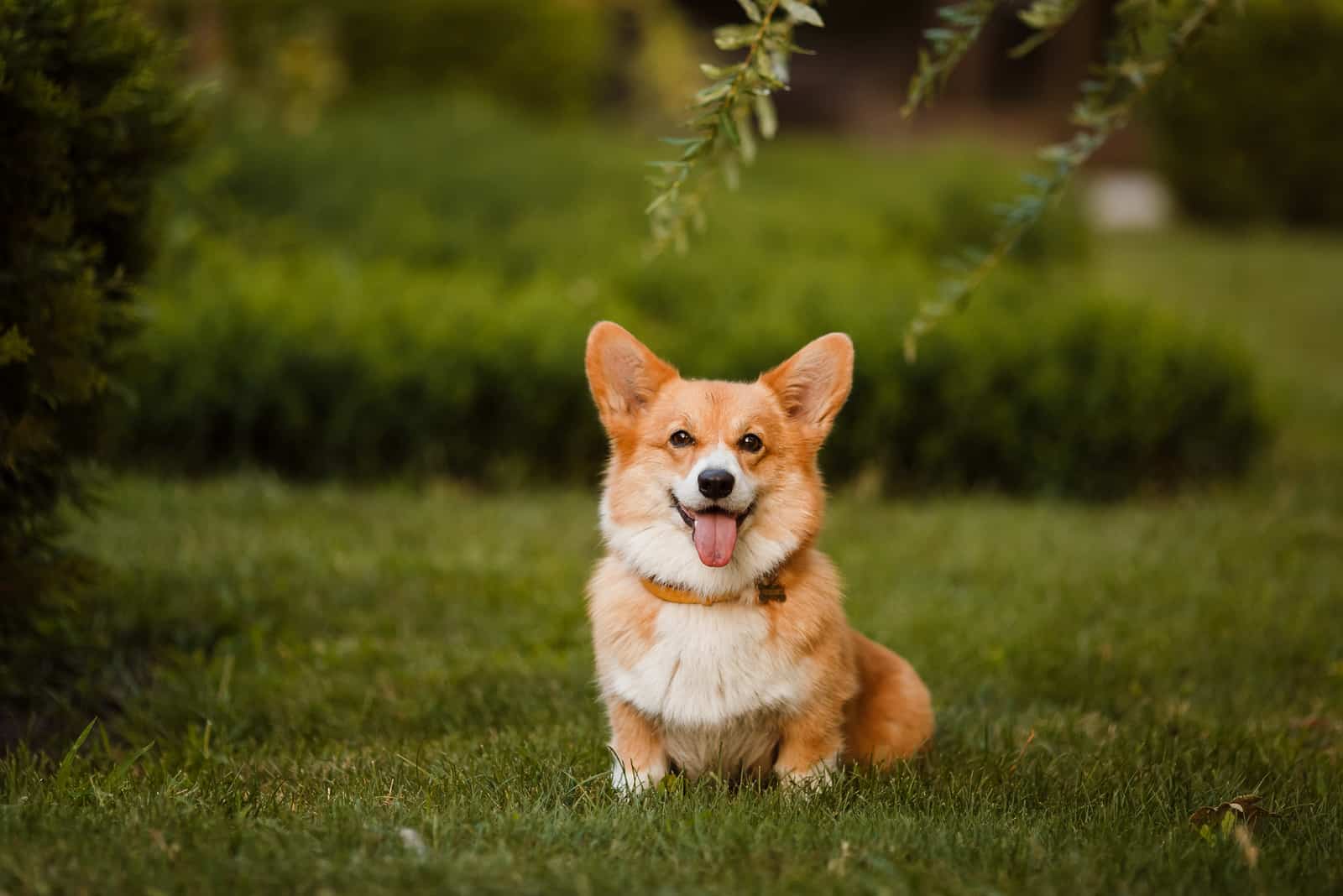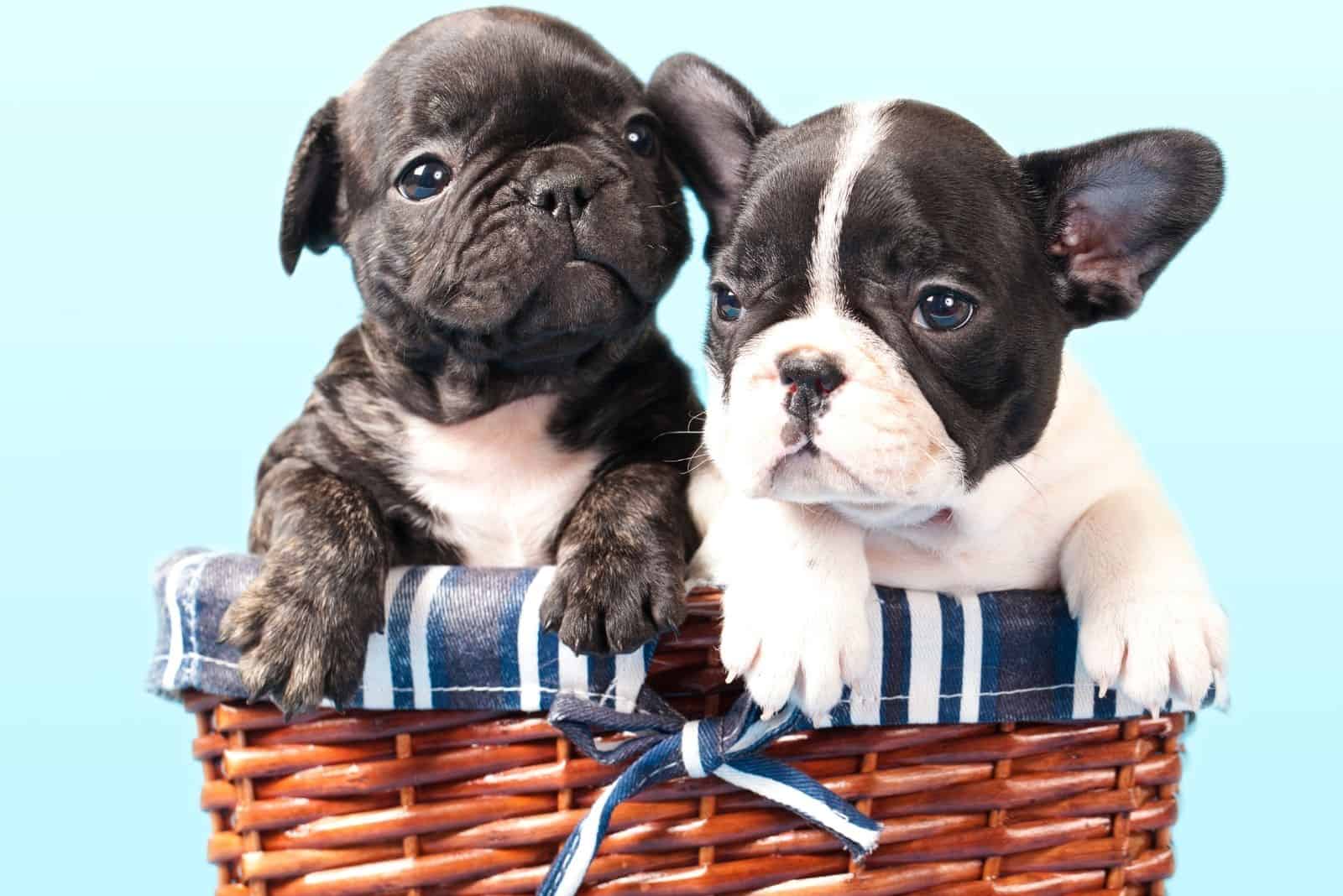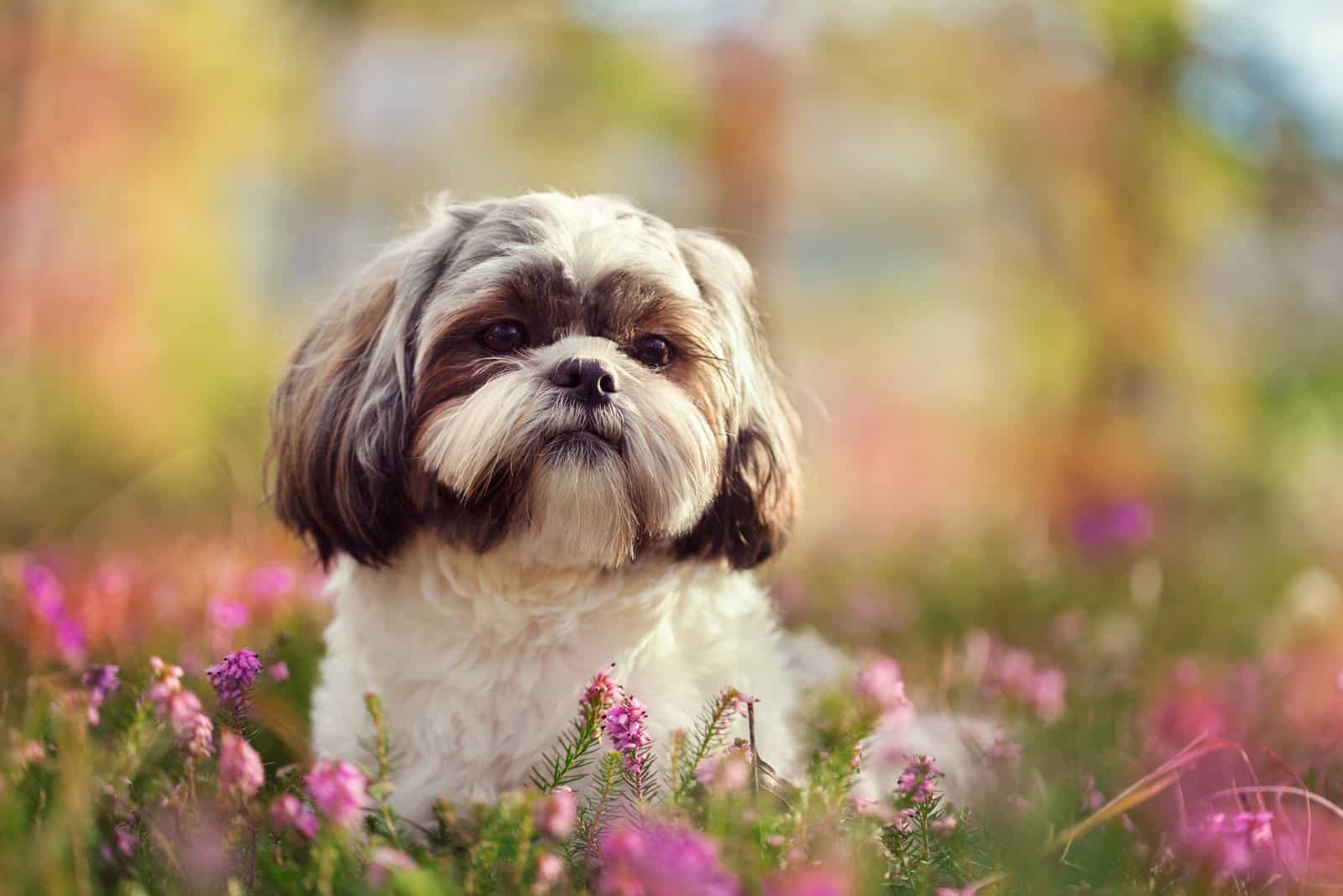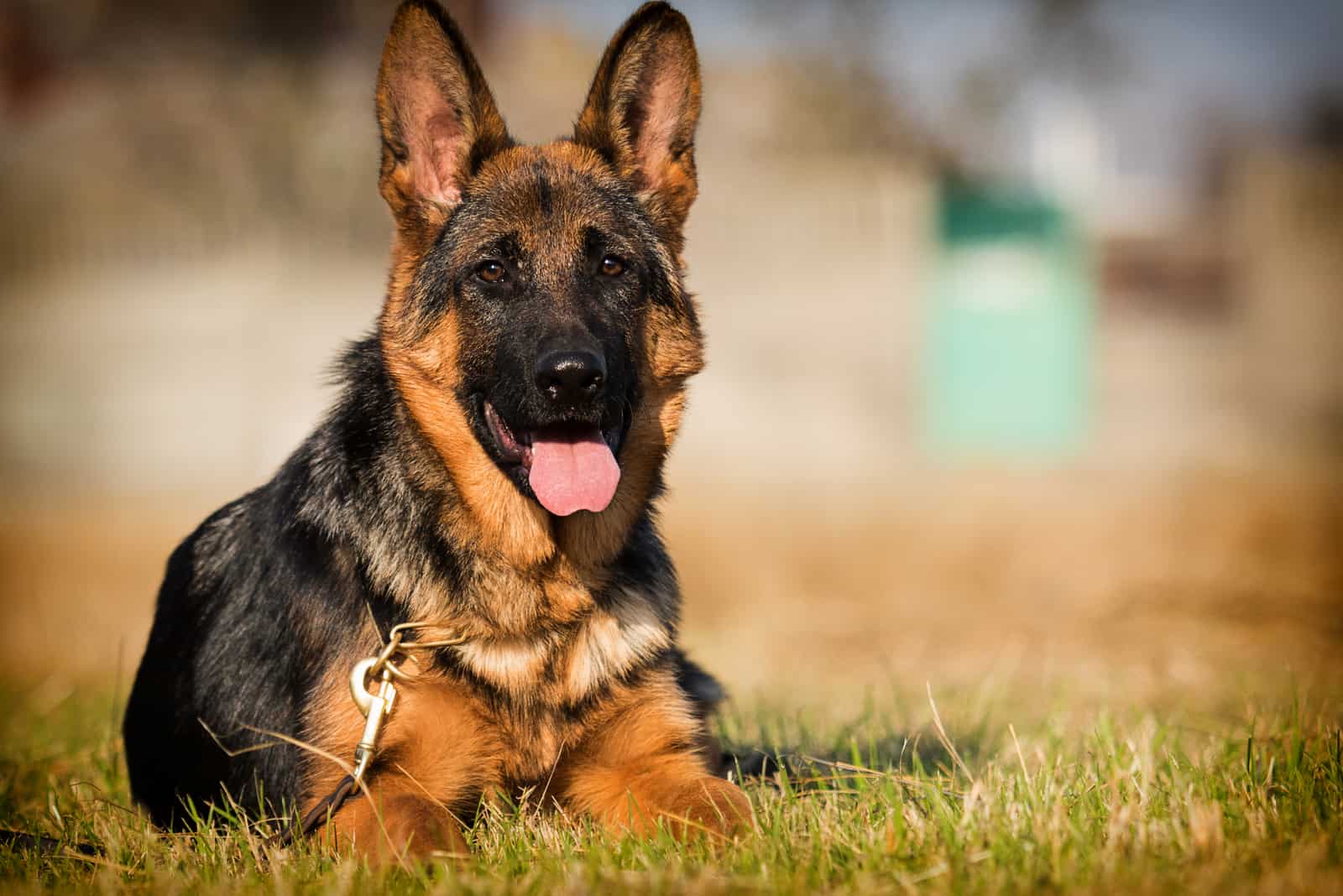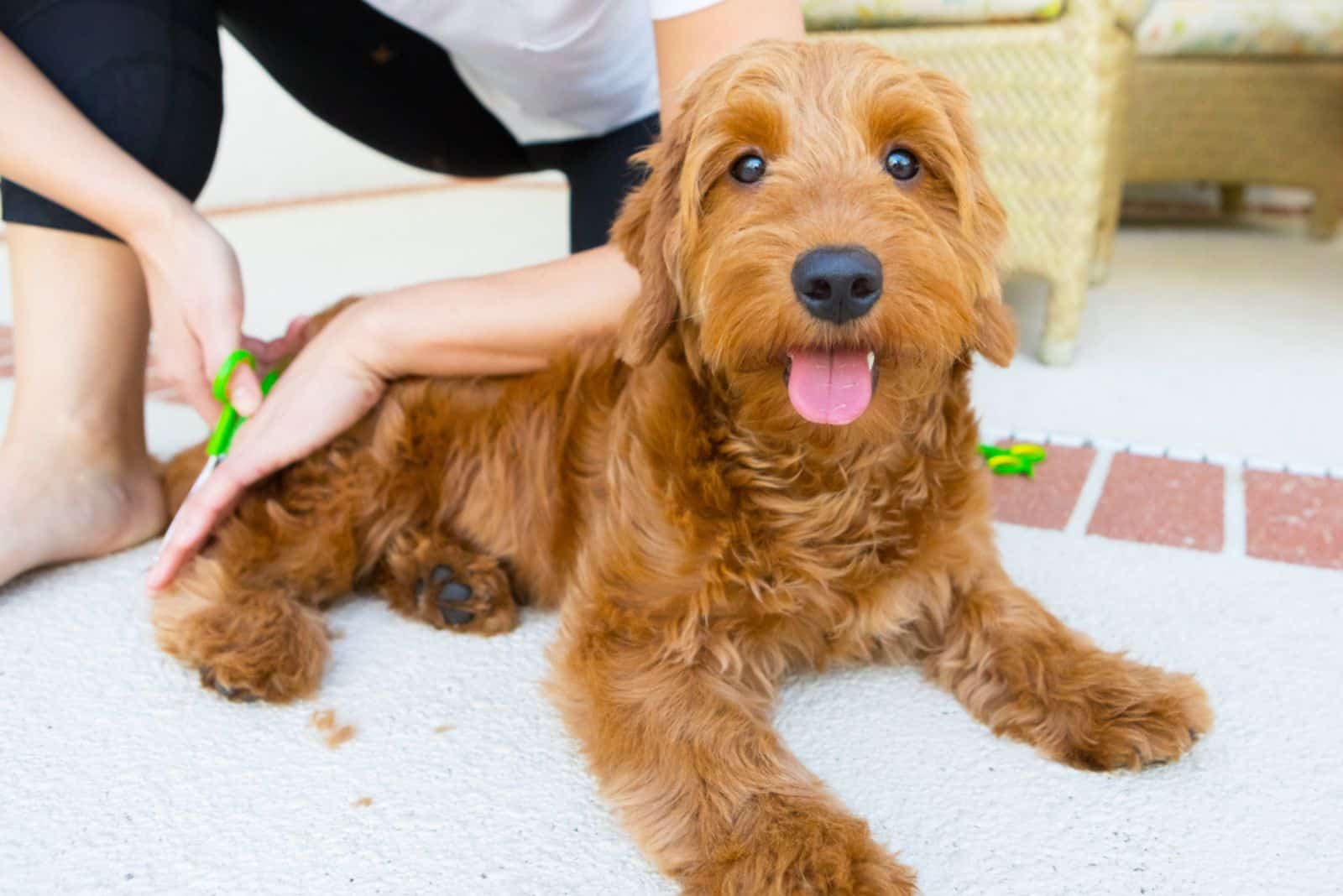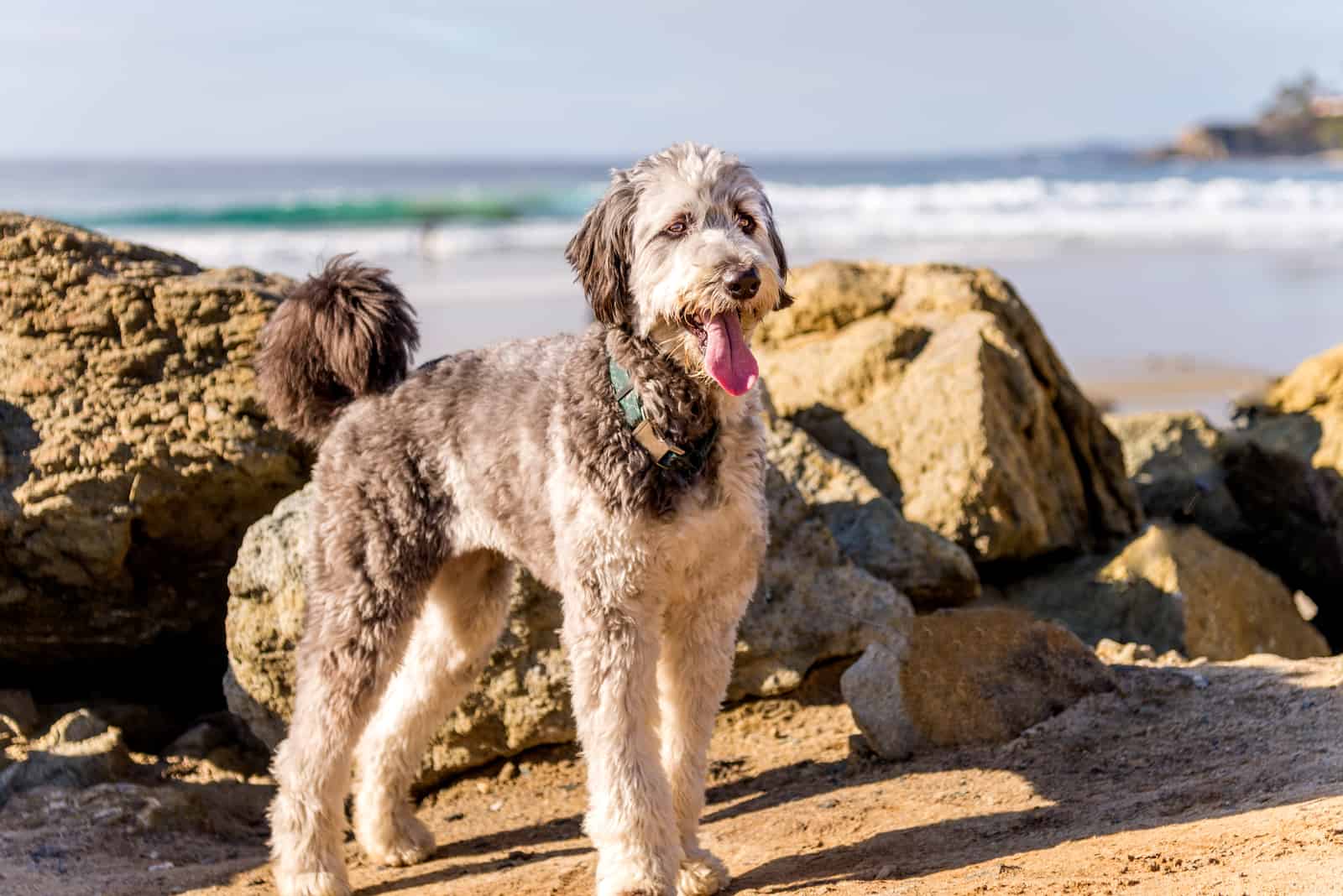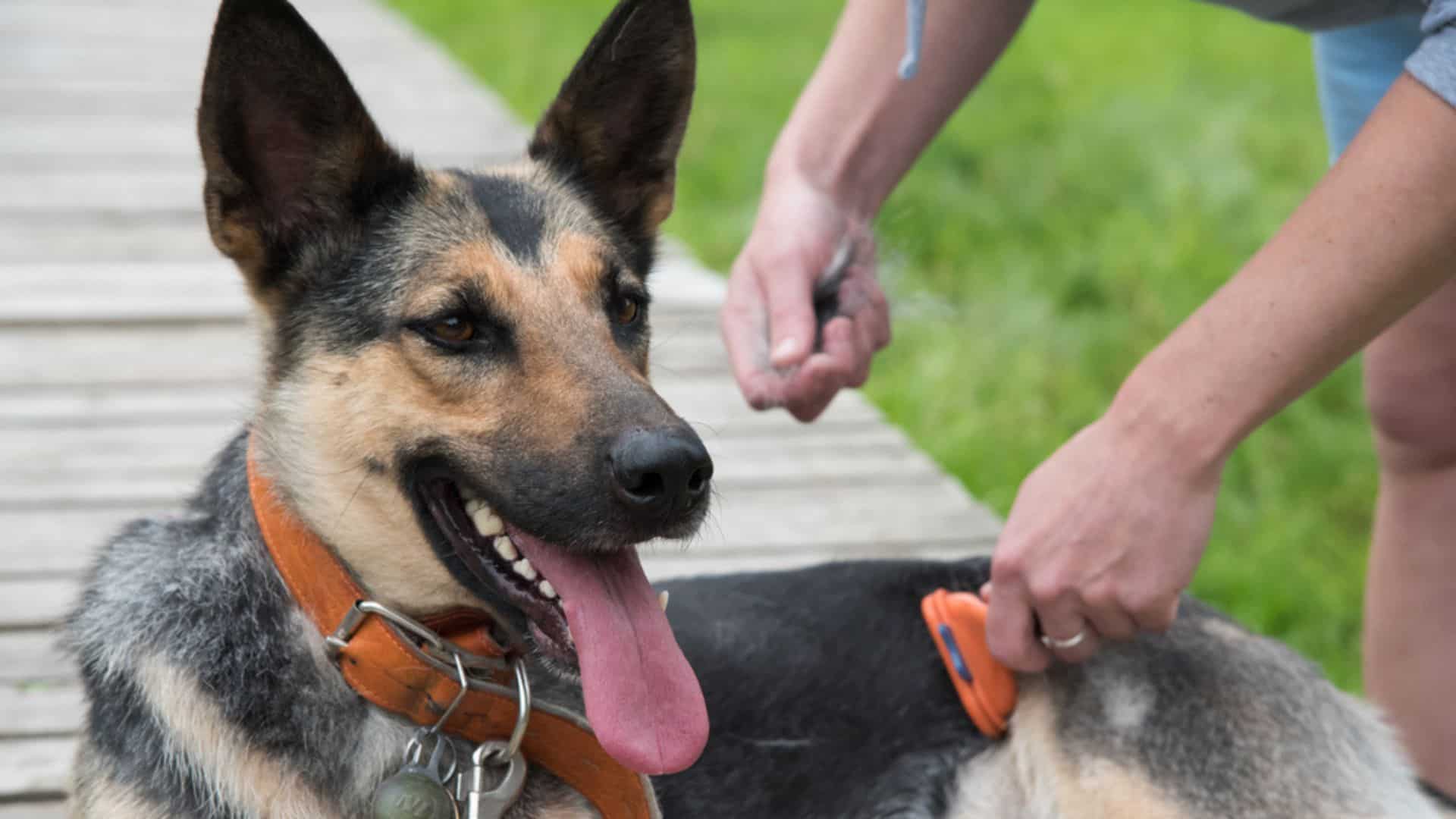The Labrador Retriever really is the top dog. This loveable pooch has held onto the number-one spot in the American Kennel Club’s ‘most popular dog breed’ for years, and that doesn’t look likely to change anytime soon!
In terms of personality, character, and temperament, they’re virtually unbeatable:
• They love kids.
• They’re great with other dogs.
• They want to be everyone’s best friend.
• They are easy to train.
• They adapt to most circumstances with zero fuss.
So, it looks like the Lab is the perfect dog, without a single negative point against it.
But before we get too carried away, let’s talk about our main topic: shedding. We need to ask, do Labradors shed? And if so, how much?
After all, if you’re thinking of getting a Labrador of your own, you need to know the truth.
Find the full answer here in our complete guide!
Do Labrador Retrievers Shed?
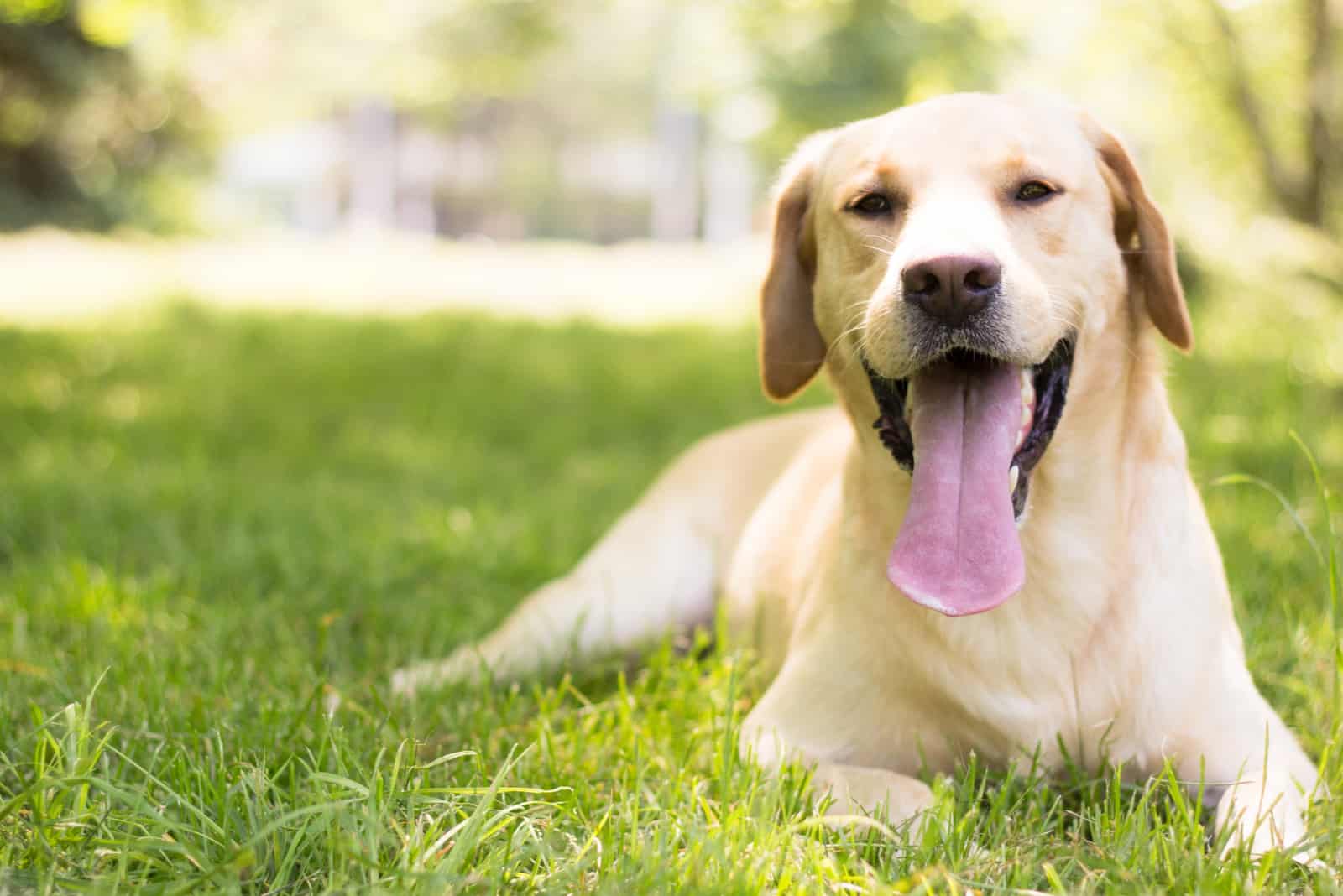
Yes, Labradors do shed their fur, even though they’re short-haired dogs.
Here’s a little-known fact: all dogs shed. Don’t fall for the myth about non-shedding dogs! The internet is stuffed with sites supposedly run by dog experts who make false claims and spread misinformation. This helps nobody, least of all the poor dogs.
Even so-called hairless dogs shed to some degree. However, the amount of shedding differs from breed to breed, influenced by the type of coat they have along with the breed’s history.
So, why do dogs shed? Let’s find out!
The Lifecycle Of Dog Hair
Dog hairs go through a lifecycle consisting of four stages:
• Anagen is the growth phase, where the individual hair grows to a length determined by the dog’s genes. Each breed is different, which is why there are so many coat types.
• Catagen is known as the transitional phase, where the hairs stop growing and are anchored in the hair follicles by the outer root sheath. Once this happens, no more pigment is produced in the hair.
• Telogen is when the hairs have stopped growing but are not ready to fall out, which is the resting phase. Although similar to the previous stage, telogen lasts three or four months, while catagen only lasts two or three weeks.
• Exogen is the fallout phase, as the follicle releases the hair, which becomes loose and detaches from the coat.
The length of each phase varies between dog breeds and can be affected by various things, such as the dog’s diet.
In addition, many breeds shed heavily a couple of times every year, which is linked to the changing seasons.
Shedding, also called molting, is a fact of life for all dog owners, though it’s fair to say that some breeds shed very little.
However, the Labrador isn’t one of them!
If you want one, get used to having dog hair around your home.
Do Labs Shed A Lot?
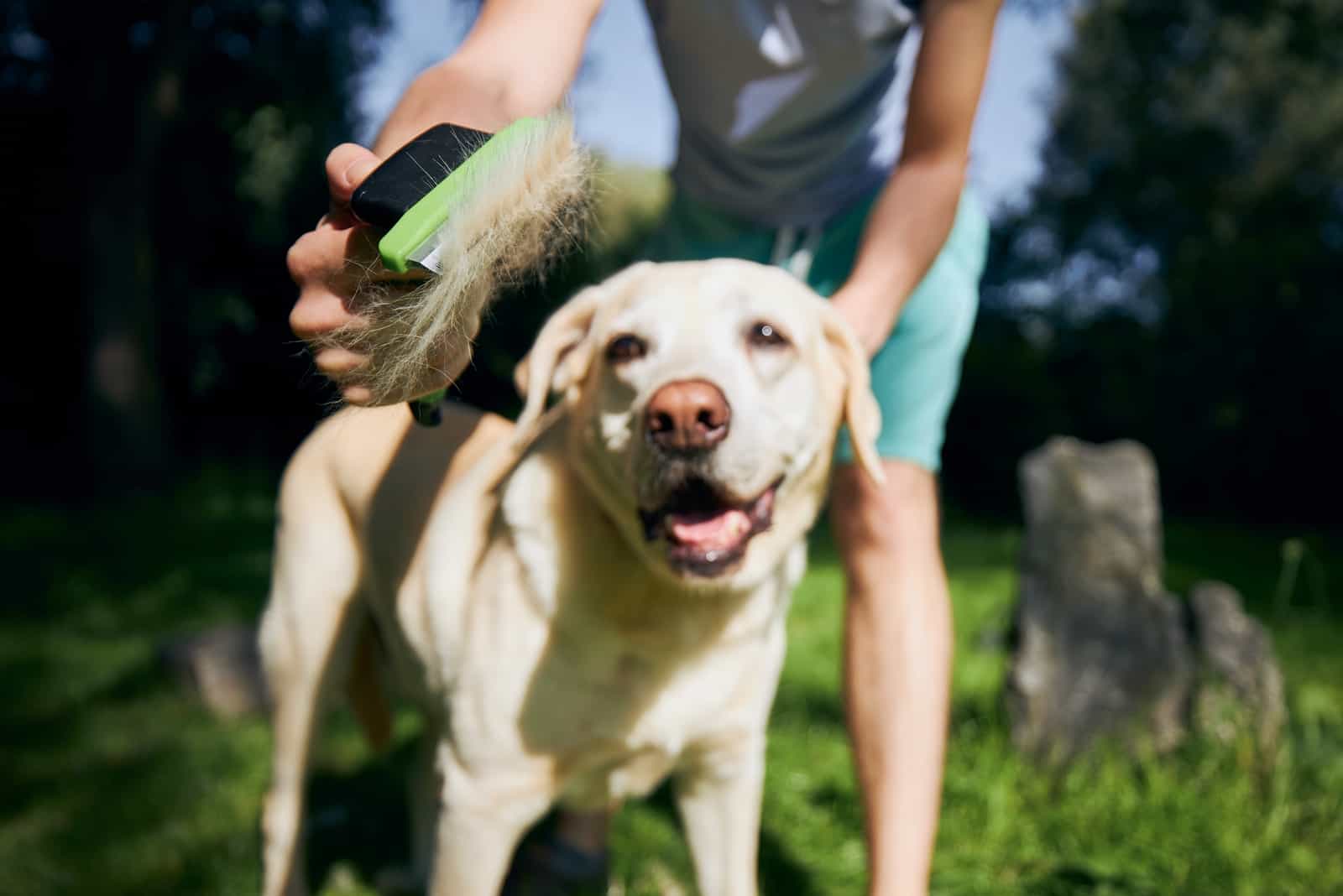
Yes! Labs are year-round heavy shedders.
On top of this, they lose even more hair during shedding season. Labs have a double coat with a topcoat of tough guard hairs over a thick, furry undercoat.
As the seasons change, double-coated dogs lose this undercoat. Although most people believe that temperature is a trigger, it’s the changing light levels at a particular time of year that cause specific hormones to leap into action.
In fall, as darkness comes earlier, the dog’s body grows a thick new winter coat for the cooler weather. Any old hairs are pushed out in preparation for the new ones, and so the fun begins!
In spring, as the evenings lighten and morning arrives earlier, this thick fluff is no longer needed, and the dog sheds again, growing a thinner summer coat that traps cool air and provides a layer of insulation. This stops them from overheating and protects the dog’s skin from harmful UV rays.
Labs developed this double coat many years ago when they were bred to retrieve fallen game in the icy waters of Newfoundland. This coat still serves them well today, wherever they may be around the globe.
Do Labradors Shed More Than Golden Retrievers?
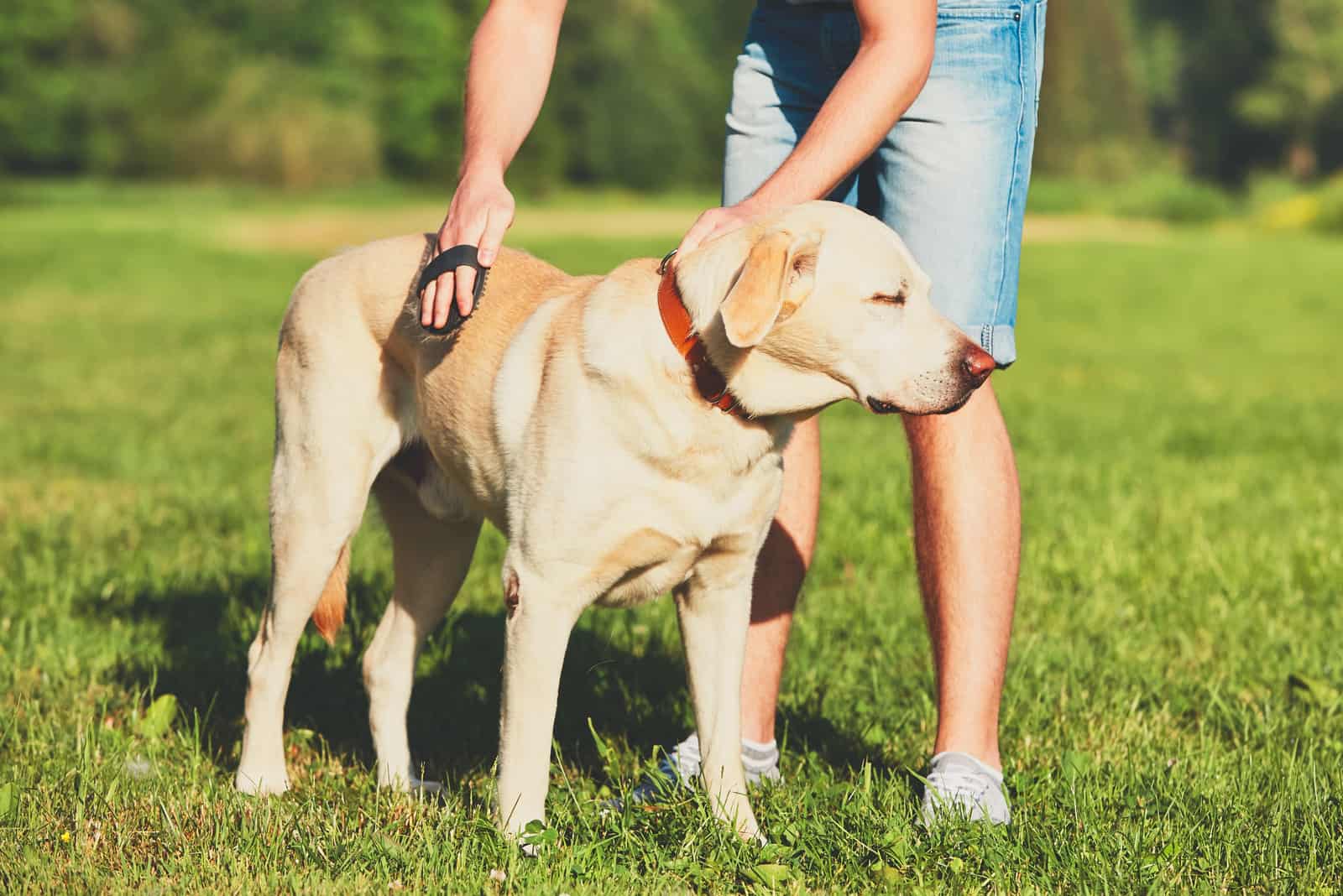
If you ask a Lab owner, most will say yes; Labradors definitely shed more than Golden Retrievers. However, if you ask Golden Retriever owners the same question, many will say the opposite is true!
So, who is right?
Actually, neither: both breeds generally shed about the same amount. Any discrepancy in this is down to the individual dog and its circumstances; a dog’s location, diet, and health will affect how much it sheds.
Goldens may seem to shed more because they have longer hair that takes more grooming to avoid tangles. All that extra brushing could help reduce the overall amount of hair that owners see around the home, giving the appearance that they don’t shed as much as Labs.
Conversely, a Lab owner who regularly grooms their dog might believe that a Golden Retriever sheds more if they have come across one that isn’t brushed as frequently. It’s all about perspective and experience!
Both breeds have thick double coats that blow in spring and fall. Both shed all year round, so there’s really no difference between the two in terms of shedding.
Why Is My Lab Shedding More Than Usual?

Excessive shedding is often a sign that something is wrong. If you notice that your furry companion is losing more hair than usual, it’s best to get it checked out.
Here are some of the possible causes:
Health Problems
Allergies and food intolerance are one of the leading causes of hair loss and excessive shedding.
Dogs can be allergic to many environmental allergens, like tree and grass pollen, mold spores, dust mites, dust, and a host of other things.
Millions of dogs are also allergic or intolerant to certain proteins in everyday foods, such as chicken, beef, lamb, wheat (gluten), soya, eggs, and dairy products.
Many of these allergies are inherited, which is referred to as atopy.
All of these allergens can affect your dog’s skin, causing rashes and hives, which your pooch will scratch at and make ten times worse.
The combined effect of scratching and damaged skin increases hair loss, and you may find bald spots on your dog.
Serious skin infection is another risk, so it’s wise to get your dog to the vet for a check-up. Your vet can help you draw up a special feeding plan that avoids specific foods, and they may prescribe medication for some of the symptoms.
Parasites
This one could have been included in the previous section, but it’s enough of a problem to warrant its own heading! Fleas, ticks, and mites can be a real pain – literally.
If you regularly exercise your furry companion in parks or the countryside where wild animals wander, you’re likely to have encountered this problem.
The first sign of these pests is excessive scratching. Your pup will constantly scratch at the irritation, breaking the skin and potentially making things worse.
Fleas
Fleas are the most common pest by far. Aside from driving your pooch insane because of all the itching, they carry nasty diseases that can make your dog severely ill. Have you ever heard of the Bubonic Plague? These critters are responsible! Fleas can also pass on tapeworm and other nasty surprises.
Mites
Mites have a habit of getting in dogs’ ears but can affect any area of the body, resulting in scabies or Demodex mange.
No matter what breed, all dogs have colonies of mites living on them all the time. They usually coexist in harmony, but sometimes the colonies grow too large, causing rashes and inflammation.
Other species of mites find their way onto your dog while they are out and about, and all of these are bad news.
Ticks
Probably the worst of the three pests, ticks latch onto your dog’s skin with powerful jaws and feast on blood until they are fat and bloated.
That’s bad enough, but these bloodsuckers can pass on some seriously horrible health conditions, including Lyme disease.
This is why it is essential to use preventative treatment for parasites regularly. It’s also best to check your dog for pests once a week or so, just to be sure.
Stress And Anxiety
Stress can show itself in dogs physically, just as it does in humans. High levels of the fight or flight hormone called cortisol can seriously damage your dog’s health, causing damage to the heart and kidneys.
It also affects the skin and coat, making it dry and flaky. Dogs will tend to scratch more, damaging hair follicles and dislodging hairs.
Dogs love routine and can become upset when this is disturbed. Fortunately, Labs are pretty good at adapting, but they prefer the status quo!
Our furry best friends can become anxious and fearful about many different things; loud noises, unfamiliar sounds, being left alone, new experiences, etc.
While it’s almost impossible to shield them from everything, it’s worth trying to reduce the amount of stress they encounter.
This is why early socialization is such a great thing, as it makes for calmer, well-adjusted adult dogs that are better equipped to deal with all that life throws at them.
Pregnancy
When a female dog is pregnant or lactating, she may lack essential vitamins and minerals. All her energy is diverted into growing the pups, giving birth, and giving the puppies the nutrition they need to thrive.
Because of this, she may go through a period of heavy shedding during this time. You’ll need to be very careful when brushing her. Use a soft bristle brush, and don’t put too much pressure on the belly or sensitive areas.
Most breeders will insist that you spay or neuter your pup within a year of buying, which is sensible advice; there are already far too many dogs without homes in the world, most of which wind up in animal shelters!
However, if you plan to breed your dog, do so responsibly and always include a vet in the process so they can advise you on nutrition for the mother.
Do All Labradors Shed?
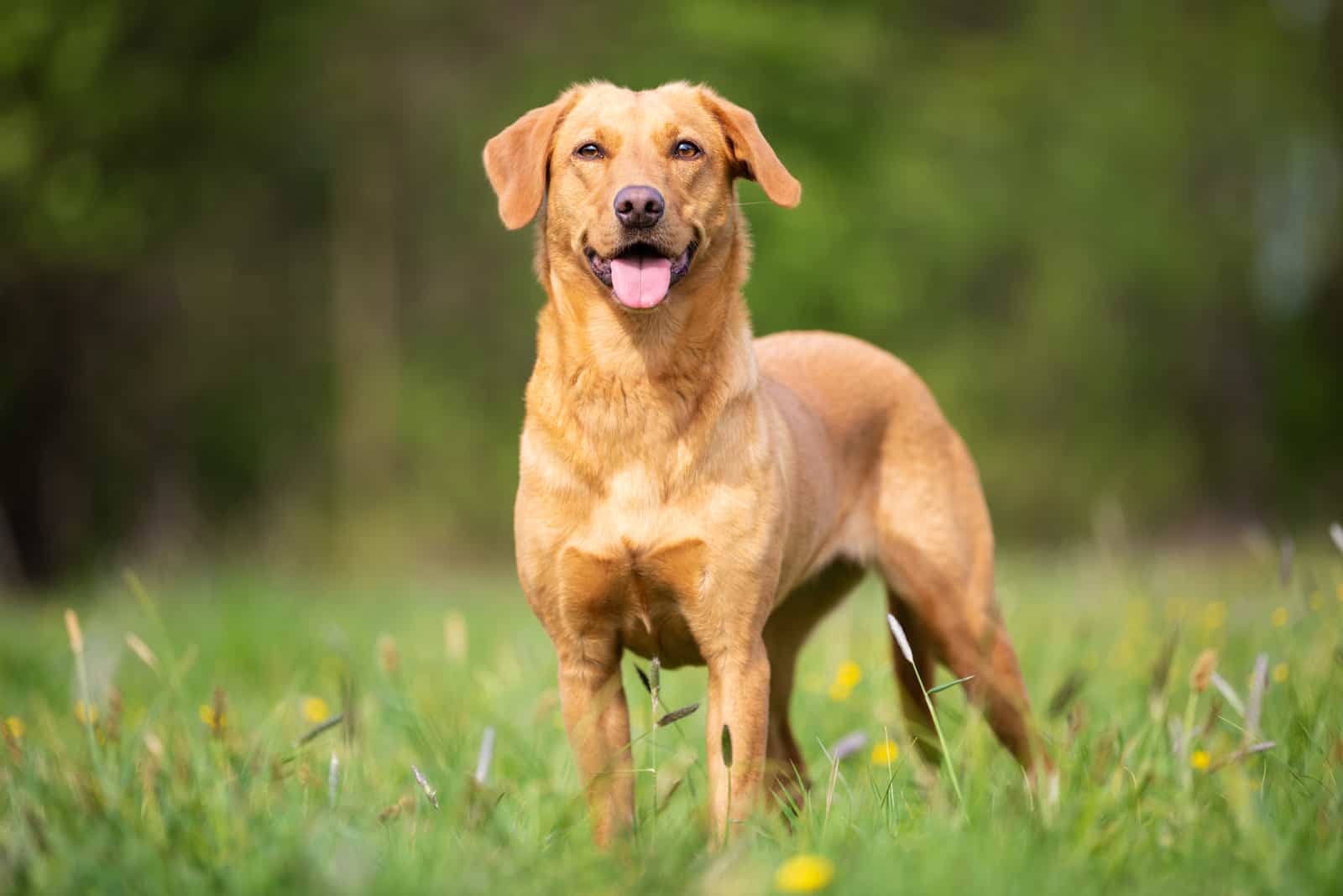
Yes, all Labradors shed, regardless of coat color.
So, your black Lab, yellow Lab, and chocolate Lab will all shed about the same amount!
While others may argue and say otherwise, the fact is that there is no difference between these three in terms of shedding.
Darker hairs show up better on light-colored materials, and light strands are more visible against dark fabric. This might give the impression that one sheds more than the others, but it’s not a true reflection of the facts.
You’ll have the same issue with heavy shedding all year round, no matter which color dog you get!
The only possible exception is if you get a mixed breed, say, a Labradoodle. Most Doodle dogs were bred to provide allergy-friendly alternatives using the Poodle’s famously hypoallergenic coat.
These dogs have the advantage of being low-shedders and are less likely to trigger allergies in humans. They also inherit the character traits of the parent dogs. Hence, a Labradoodle has the Lab’s loving, affectionate good nature, and the Poodle’s sharp intelligence and goofy playfulness!
Read Next: Why Labradors Are The Worst Dogs +5 Things To Change That
How Can I Stop My Labrador From Shedding?
The truth is that you can’t. But you can reduce the amount of shedding and cut down the amount of dead hair that gets all over your stuff.
Here are some tips to get you started:
Regular brushing
Daily brushing is best, and it shouldn’t take too much of your time. If you can’t manage this, brush your dog at least once a week to catch all the loose hair.
Invest in de-shedding tools, like a slicker brush and a Furminator. Rubber brushes are ideal for dogs with short hair. The bristles get right into the dog’s fur to remove all the loose stuff with ease.
Brushing collects dead hair and distributes natural oils through the fur that conditions it and keeps the skin and coat healthy.
During shedding season, it’s best to brush your dog every day unless you want a lot of hair floating around your home! This fur is so light that it sticks to fabric easily. You’ll find it on your sofa, in your bed, on your clothes, and in your lunch.
If you want to avoid this, get brushing!
If you can, brush your dog outdoors to stop loose hair from floating away in your home.
Regular Bathing
Bathing your Lab once a month keeps the coat clean and removes loose hair. It’s not good to bathe them more frequently, as this will wash out those natural oils we mentioned earlier.
Never use human soaps, shower gels, or shampoos and conditioners! Our skin has a different pH value and can cope with more acidic chemicals. If you use these on your dog, you risk drying out their skin or triggering an adverse reaction.
You could get away with using a mild baby shampoo a couple of times, but it’s better to buy a specially formulated dog shampoo and conditioner.
On bath day, it’s best to brush your dog before they get wet as this loosens any dirt, which helps it to come off easily when the dog is washed.
Also, if there are any knots or tangles (unlikely in the Lab’s short hair, but still possible), the water can make these tighter, which will hurt when tugged by the brush.
To give yourself a break once in a while, why not use a professional groomer?
Vacuum Your Home Frequently
Never underestimate the value of a thorough clean!
It all depends on your budget, but it’s worth investing in a good vacuum cleaner. Even so, there’s no need to pay out hundreds of dollars when there are reasonably-priced models that do the job just as well.
Not everyone can afford a Dyson, and not everyone believes that these ‘top’ models are up to the job anyway. Our advice? Check out reviews on sites like Amazon to get an overall idea, then find someone selling the model you like for the right price!
Some brands produce vacuum cleaners specifically aimed at pet owners. These robust models can handle pet hair, and most are fitted with filters that trap environmental allergens, like dust, dander, and pollen.
A Healthy Diet
A poor diet lacking in essential nutrients will have an adverse effect on your dog’s coat. They may get dry skin, or the coat will feel greasy.
You’ll notice more dander (dry skin flakes) and a lot more loose hair.
Conversely, you can always tell whether a dog has a balanced diet, as its coat looks glossy and healthy. Take time to do your research and find a nutritious dog food that provides all the essential nutrients that your furry pal requires.
If necessary, use supplements to ensure that your puppy gets omega fatty acids (from fish oil or olive oil), as these keep a dog’s coat healthy.
The breeder where you bought your pup will be only too happy to help you out here. Most will have provided a sample of the puppy food they used before you took the pup home. And as your puppy grows and develops, the breeder will advise you on the best diet.
Mental Health
As we said earlier, dogs often have physical reactions to anxiety and stress, so try to reduce these factors as much as possible.
Admittedly, this is sometimes easier said than done! Even so, try to do your best to avoid stressful situations that may affect your dog.
Two significant causes of stress and anxiety in dogs are separation anxiety and a lack of mental stimulation.
The answer is simple: avoid leaving your dog home alone for long periods, and ensure that they have plenty to keep their minds occupied.
If you can’t be there for your dog, arrange for visitors to spend time or take them out for walks. Buy a variety of puzzle toys and games and enroll your furry pal in doggie sports. Give your puppy a purpose and get their mind working!
They’ll love you all the more for it, they’ll be super-happy, and if your Lab’s coat doesn’t look its best, you’ll know that poor mental health isn’t the cause.
Should I Shave My Lab?
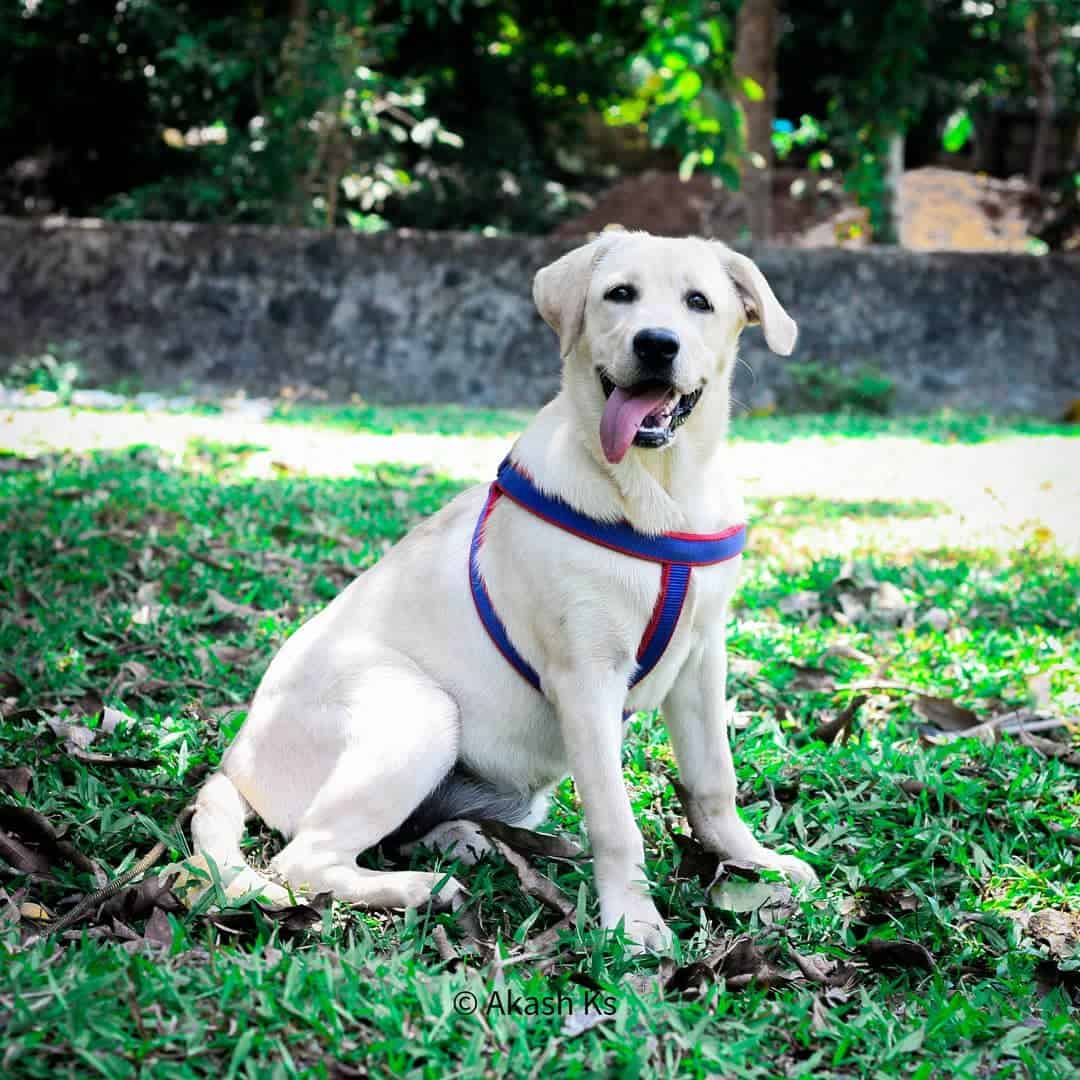
Photo from: @akash.ks_
On no account should you ever shave your Labrador!
No matter what you read on websites and dog forums, shaving a Lab to avoid the mess of shedding is never a good idea.
The outer layer and fur will grow back, but the undercoat will be coarse and fuzzy, which is uncomfortable for your dog. It will probably grow back unevenly and look odd and patchy.
You also risk exposing your dog to sunburn and skin cancer, as well as making it overheat. A dog’s coat is an essential part of its body temperature regulation. If you interfere with this, your pooch won’t be able to cope with the summer heat.
Countless dog owners make the mistake of shaving their fur babies in summer, thinking it will keep them cool, but it really isn’t necessary. Some dog breeds have the type of coat that can cope with being clipped, but not the Labrador Retriever!
Do Labradors Shed? The Last Word
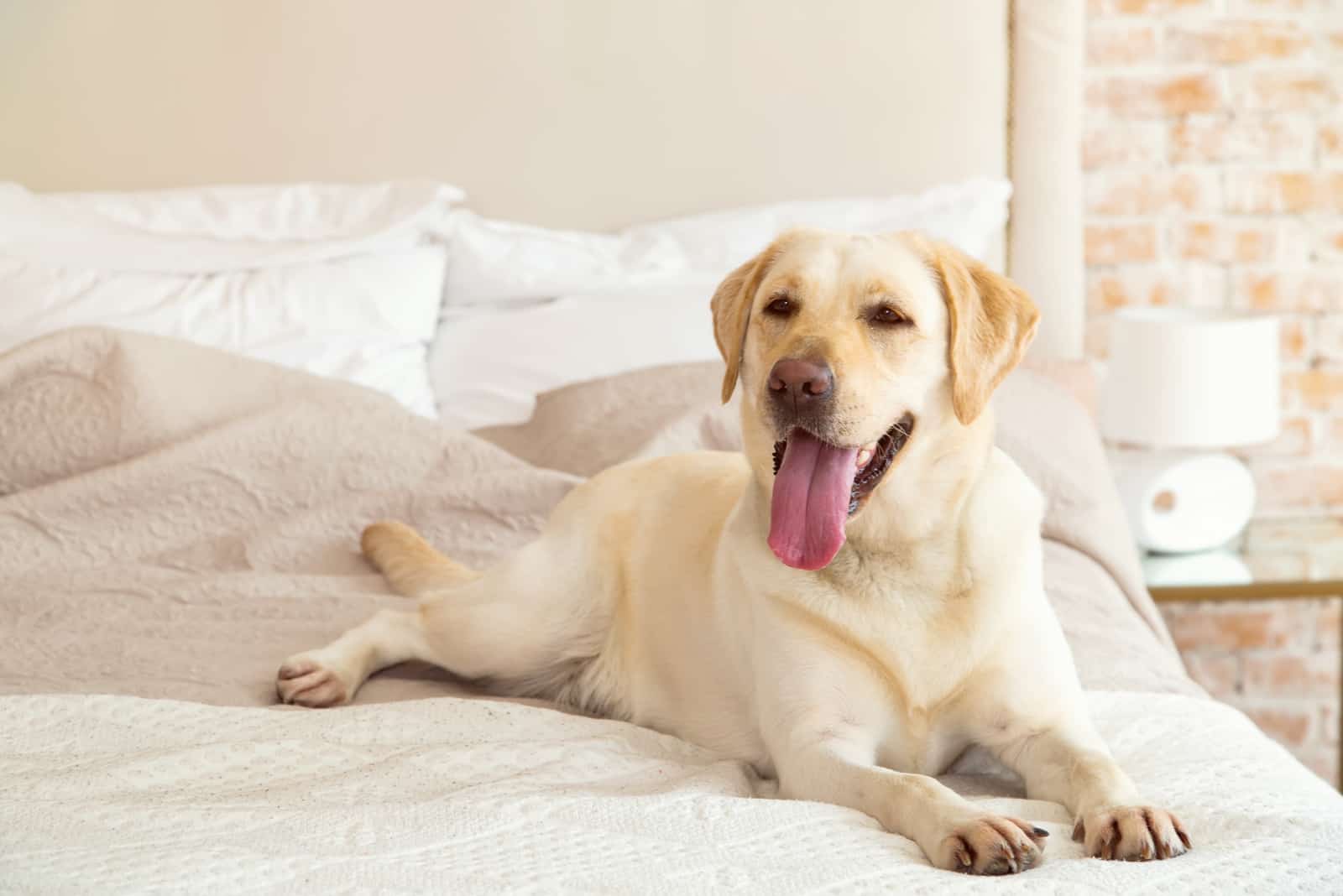
Is the Labrador the best dog in the world? Many dog lovers think so!
At the start, we asked, do Labradors shed? And the answer is a resounding yes.
Seasoned dog lovers often don’t mind all the hair: it’s all part of sharing your life with a canine companion. Others are not so keen on the fur all over, but they can’t imagine life without a dog in the home.
Also, people who suffer from mild allergies may need to find a way to reduce contact with dog hair to ease their symptoms. If your allergies are more severe, perhaps the Lab isn’t the best choice? It may be wise to look for a hypoallergenic dog instead, like the Labradoodle we mentioned.
So, if you get a cute little Lab puppy, you’d better get used to Lab hair in your home. A good dog brush will be your best friend here: regular brushing will do wonders! It won’t eliminate every hair, but it will reduce the amount that makes its way into your bed, onto your sofa, or in your breakfast granola bowl.
There are other tricks you can use to stop your home from being overrun with dog hair, so be sure to make a note of those on our list above.
While dog lovers may argue about which breed is best, everyone knows that Labradors are amazing animals. So, they shed a lot, but we still love them all the same!
Read Next:
• 8 Best Labrador Breeders In Florida
• 9 Labrador Breeders In New York That You Can Trust
• 10 Reputable English Labrador Breeders In The States
